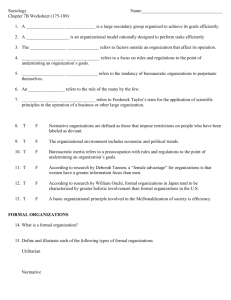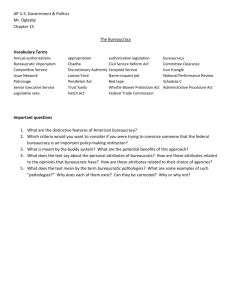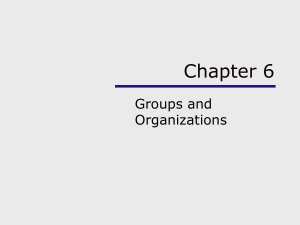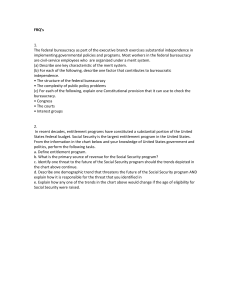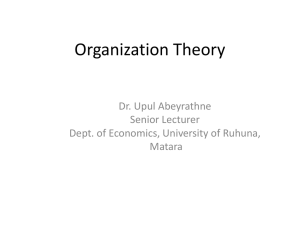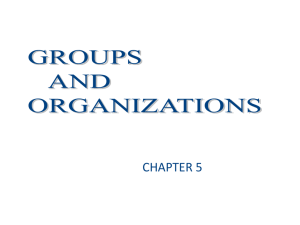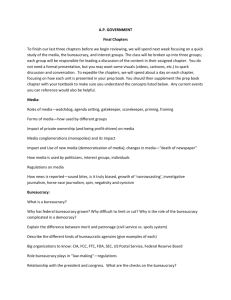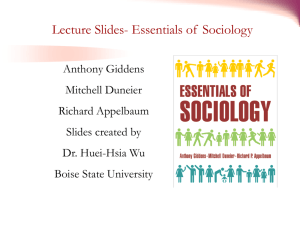Chapter 7
advertisement
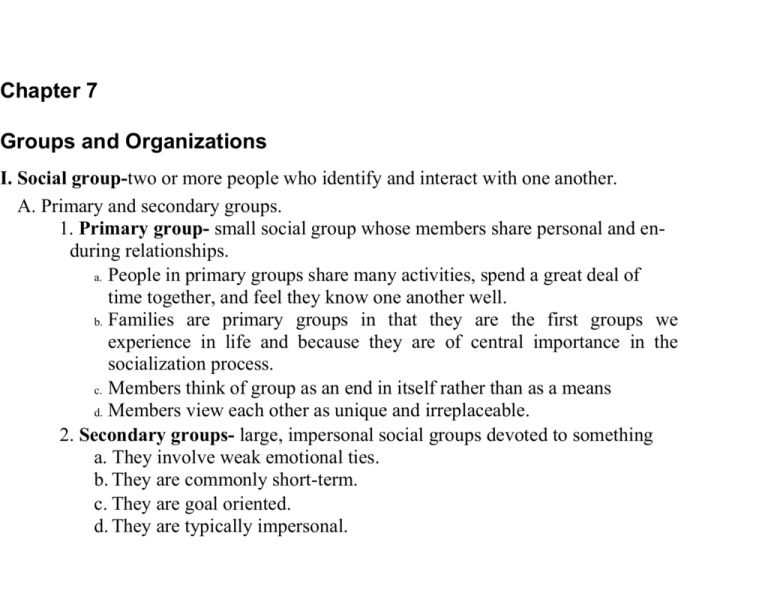
Chapter 7 Groups and Organizations I. Social group-two or more people who identify and interact with one another. A. Primary and secondary groups. 1. Primary group- small social group whose members share personal and enduring relationships. a. People in primary groups share many activities, spend a great deal of time together, and feel they know one another well. b. Families are primary groups in that they are the first groups we experience in life and because they are of central importance in the socialization process. c. Members think of group as an end in itself rather than as a means d. Members view each other as unique and irreplaceable. 2. Secondary groups- large, impersonal social groups devoted to something a. They involve weak emotional ties. b. They are commonly short-term. c. They are goal oriented. d. They are typically impersonal. B. Group leadership. 1. Instrumental leadership emphasizes the completion of tasks; expressive leadership emphasizes collective well-being. 2. There are three styles of decision making in groups: a. Authoritarian leadership focuses on instrumental concerns, takes personal charge of decision-making, demands strict compliance b. Democratic leadership tries to include everyone in the decision-making c. Laissez-faire leadership allows group to act more or less on its own C. Group conformity. 1. Asch's research into group conformity showed that many of us are willing to compromise our own judgment to avoid being different, even from strangers 2. Milgram's research into obedience suggests that people are likely to follow directions from others, even when it means inflicting harm on another person. 3. Janis' research into groupthink, the tendency of group members to conform by adopting a narrow view of some issue. D. A reference group is a social group that serves as a point of reference for people making evaluations or decisions. 1. Stouffer's research on reference group dynamics showed that we do not make judgments about ourselves in isolation, nor do we compare ourselves with just anyone. E. An ingroup is a social group commanding a member's esteem and loyalty; an outgroup is a social group toward which one feels competition or opposition. F. Social diversity influences intergroup contact in four ways: 1. The larger a group, the more likely members will maintain relationships only with other group members. 2. The more internally heterogeneous a group is, the more likely that its members will interact with outsiders. 3. The greater the overall social parity within a setting, the more likely it is that people from diverse backgrounds will mingle and form ties. 4. Physical space affects the chances of contacts among groups. G. A network is a web of social ties. II. Formal organizations are large, secondary groups that are organized to achieve goals efficiently. A. There are three types of formal organizations: 1. Utilitarian organizations, which people join in pursuit of material rewards. 2. Coercive organizations, distinguished by involuntary membership. 3. Normative organizations or voluntary associations, in which people pursue goals they consider morally worthwhile. B. Bureaucracy became common during the Industrial Revolution. C. Bureaucracy is an organizational model rationally designed to perform tasks efficiently. Max Weber identified six key characteristics of bureaucracy: 1. Specialization. 2. Hierarchy of offices. 3. Rules and regulations. 4. Technical competence. 5. Impersonality. 6. Formal, written communications. D. Organizational environment refers to a range of factors outside the organization that affects its operation, including: 1. technology. 2. economic and political trends. 3. population patterns. 4. other organizations. E. The informal side of bureaucracy is that members of organizations try to personalize their procedures and surroundings. F. Problems of bureaucracy. 1. Bureaucratic alienation. 2. Bureaucratic inefficiency and ritualism. 3. Bureaucratic inertia. 4. Robert Michels made the link between bureaucracy and oligarchy, the rule of the many by the few. The "iron law of oligarchy" refers to the pyramid shape of bureaucracy placing a few leaders in charge of organizational resources. III. The Evolution of Formal Organizations. A. Scientific management is the application of scientific principles to the operation of a business or other large organization. 1. Scientific management involves three steps: a. Managers observe the tasks performed by the workers. b. Managers analyze data to discover ways for workers to become more efficient. c. Management provides guidance and incentives to workers to be more efficient. B. During the 1960s, big businesses were inefficient and unfair in their hiring practices. 1. By the end of the twentieth century, white men in the United States held 61 percent of management jobs. 2. Women bring a "female advantage" to companies striving to be more democratic C. Differences beteween formal organizations in Japan and in the United States: 1. Hiring and advancement. 2. Lifetime security. 3. Holistic involvement. 4. Broad-based training. 5. Collective decision making. E. Ways in which today's organizations differ from those of a century ago: 1. Creative autonomoy. 2. Competitive work teams. 3. A flatter organization. 4. Greater flexibility. F. The "McDonaldization" of society. 1. Four principles of McDonaldization: a. Efficiency. b. Calculability. c. Uniformity and predictability. d. Control through automation. 2. Rationality, although efficient, may be highly dehumanizing. IV. The Future of Organizations: Opposing Trends A. "Intelligent organizations" have become more productive than ever. B. The postindustrial economy has created many highly skilled jobs, more routine service jobs, and offers few of the benefits that today's highly skilled workers enjoy. C. Organizational "flexibility" that gives better-off workers more autonomy carries the threat of "downsizing" for rank-and-file employees.
